Discover North Idaho: A Unique Tourism Experience
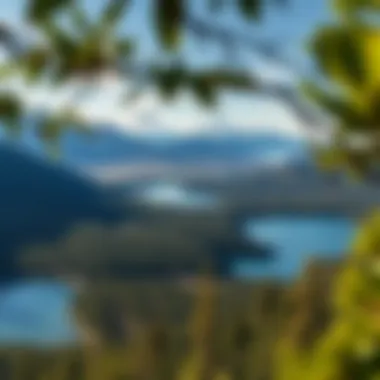
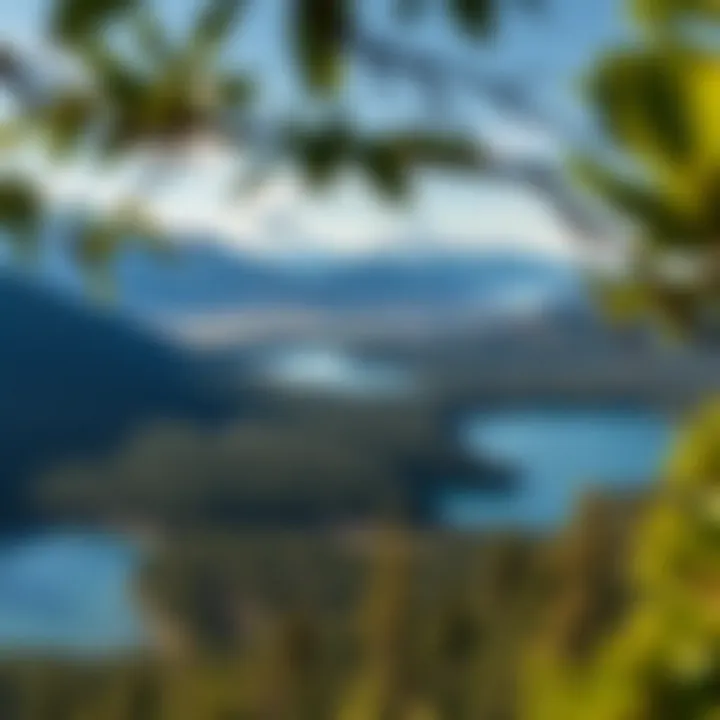
Intro
North Idaho isn't just a pretty face; it's a treasure trove of lush landscapes, rich culture, and endless adventure waiting to be explored. Nestled with towering pines and sparkling lakes, this region offers much more than meets the eye. Beyond the breathtaking views, you'll find a vibrant community deeply connected to its natural resources, where the heritage of forestry practices enriches both the environment and local culture.
Tourists flock to North Idaho for its wide array of outdoor activities that cater to nature lovers and thrill-seekers alike. From hiking the scenic trails of the Selkirk Mountains to fishing in the crystal-clear waters of Lake Pend Oreille, adventure lurks around every corner. However, what truly sets North Idaho apart is its commitment to sustainable tourism, which intertwines the preservation of its untouched beauty with responsible recreational use.
In this article, we take a holistic view of North Idaho tourism. We will delve into its unique attractions, ecological practices, and the local communities working tirelessly to maintain this balance. It’s about more than just getting away; it’s about connecting economically and environmentally, ensuring that this paradise can be enjoyed for generations to come.
Overview of Forestry Practices
Understanding the connection between tourism and forestry in North Idaho is crucial. One cannot fully appreciate the region’s allure without acknowledging the role that careful woodland management plays in preserving its iconic landscapes.
Importance of Foresting
Forests are the lifeblood of countless ecosystems and communities in North Idaho. They not only provide stunning backdrops for recreational activities but also serve as a critical resource for the lumber industry and wildlife habitats. Well-managed forests contribute to air and water quality, biodiversity, and even climate stability. By maintaining the health of these woodlands, North Idaho ensures that its natural beauty remains intact for both the current and future generations.
Types of Forestry Practices
There are a variety of forestry practices employed in North Idaho, each designed to maximize the health of the land while allowing for responsible utilization:
- Selective logging: This involves carefully choosing which trees to harvest. It minimizes disruption to the ecosystem, preserving the overall forest health while allowing for timber production.
- Reforestation efforts: After harvesting trees, landowners often engage in planting new saplings, ensuring future generations of trees.
- Sustainable harvesting: This practice follows guidelines that limit the amount of wood taken while promoting forest longevity.
By understanding these practices, tourists can gain a deeper appreciation for the scenery surrounding them, and recognize the importance of sustainability in their travel choices.
"Sustainable forestry is not just about tree-counts; it’s about the holistic health of the ecosystem and the people who inhabit it."
North Idaho stands out as a beacon of responsible tourism, striking a fine balance between enjoying nature and preserving it. Visitors should keep this in mind when planning their adventures.
Preface to North Idaho
North Idaho stands as a captivating tapestry woven from natural wonders, deep-rooted culture, and historical narratives that beckon both travelers and scholars alike. Within this article, we dive into the multifaceted essence of this unique region, shedding light on its significance in the broader context of tourism. This introduction serves as the gateway to understanding the various dimensions that make North Idaho a remarkable destination.
Historically, North Idaho has been shaped by its diverse topography and ecosystems. From soaring mountain ranges to serene lakes, the geographical features play a pivotal role in attracting outdoor enthusiasts. This region offers not just stunning vistas, but also a plethora of activities that promote a healthy and adventurous lifestyle. The interplay between nature and human activity here provides a living canvas that reflects both environmental richness and community resilience.
When one considers tourism in the context of North Idaho, it becomes evident that there are countless layers to peel back. The blend of recreational pursuits and cultural experiences can enrich anyone's travel itinerary. Travelers can engage in hiking the breathtaking trails of the Panhandle National Forests or take part in local festivals that celebrate the heritage of the area. Each experience is an invitation to connect—either with the land or with the local communities that thrive on their shared history.
Therein lies the perspective that makes tourism in North Idaho relevant today. Visitors not only enjoy the beauty of the landscape, but also partake in a dialogue about sustainable practices that are increasingly necessary in our changing world. As climate change presents challenges, areas like North Idaho become crucial as case studies for sustainable tourism practices.
By exploring this region, we uncover the paradoxes and strengths present within North Idaho's tourism model. Engaging with local perspectives enriches the narrative—highlighting how the communities interact with both their environment and visitors. Furthermore, we must consider various factors, such as economic impacts and environmental stewardship, shaping the future of tourism here.
In summary, this article aims to offer a comprehensive overview of North Idaho through a lens that's both analytical and engaging. By understanding and appreciating the diverse activities and cultural offerings, one fosters a deeper connection with what North Idaho represents. Through this exploration, we aspire to inspire a conscious approach to travel that respects both nature and the rich human legacy it holds.
"To truly appreciate North Idaho is to understand its rhythms, its whispers of history, and its promise of adventure."
As we proceed through the subsequent sections, we will delve deeper into the geographical, historical, and recreational aspects of North Idaho, painting a vivid picture for those drawn by its allure.
Geographical Overview
Understanding the geographical layout of North Idaho is essential for both tourists and professionals working in the realm of natural resources and tourism. The regional features not only shape the landscape but also influence the activities and experiences available, making it a vital aspect of this exploration. North Idaho’s unique topography, which consists of majestic mountains, dense forests, and expansive lakes, contributes significantly to its appeal as a tourism destination.
Topography and Landscapes
The topography of North Idaho is a patchwork of rugged mountain ranges and serene valleys. The Selkirk and Bitterroot Mountains serve as a spine for much of the region, offering hikers and mountaineers countless opportunities to explore. These mountains get blanketed with snow during winter, transforming them into a winter sports haven. Conversely, the picturesque Coeur d’Alene Lake, with its emerald waters, attracts visitors during the warmer months, making it a hotspot for water-based recreation.
The diverse landscapes host a variety of ecosystems, from pristine forests to open meadows,** each providing unique habitats for wildlife**. For example, the fragrant pine forests not only add to the natural beauty but also play a role in local forestry practices, which have a significant impact on the economy and ecosystem management in the region.
"North Idaho is not just a destination; it’s a mosaic of experiences waiting to be discovered, with each twist and turn offering a new slice of nature's artistry."
Moreover, the varied topography supports different types of outdoor activities. Cyclists can find winding trails that snake through the valleys, while serene fishing spots beckon anglers looking to reel in trout. Many of these activities heavily rely on the landscape's natural features, emphasizing the interconnectedness of geography and tourism in this region.
Climate Considerations
Climate is another essential factor that shapes tourism in North Idaho. The region experiences a continental climate, characterized by warm summers and cold winters, which influences seasonal activities significantly. Summer temperatures can soar into the 80s°F (27°C), making it a perfect escape for those seeking outdoor adventures like hiking, sailing, and fishing. On the other hand, winter temperatures can plummet as low as the 20s°F (-6°C), inviting winter sports enthusiasts to hit the slopes or indulge in snowshoeing.
Rainfall is moderate throughout the year, and the mountain ranges can experience significant snowfall, creating ideal conditions for skiing and snowboarding. Understanding the climatic variations allows tourists and local businesses to better prepare and cater to seasonal demands, thus optimizing their experiences.
Tourists should consider checking the average weather trends when planning their visit; this can make all the difference. Whether one is looking to traverse the mountains in summer or carve through the snow in winter, knowing what to expect sets the stage for a memorable trip.
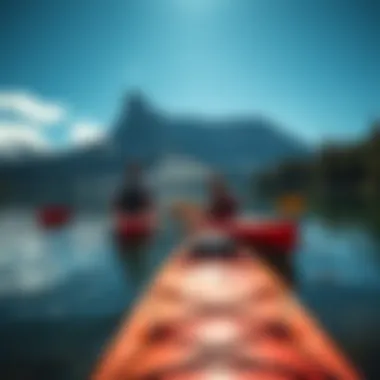
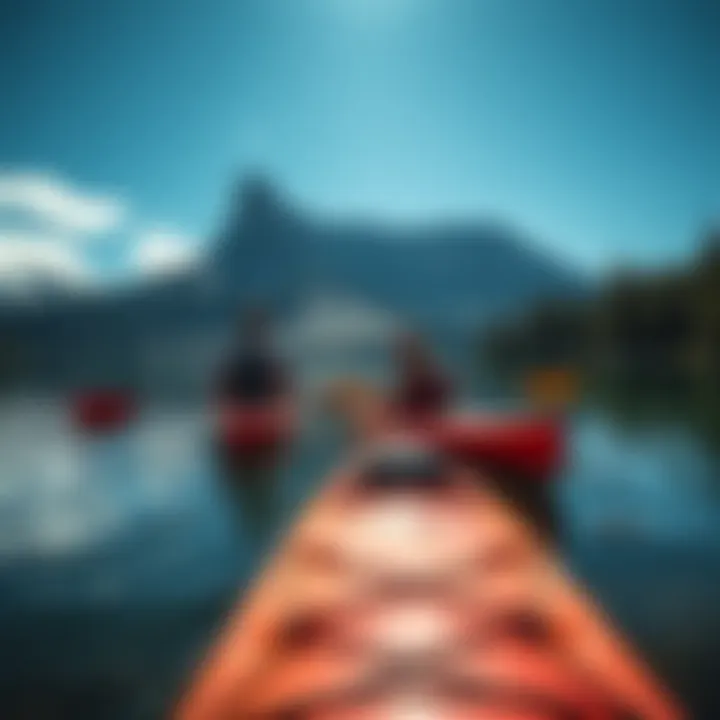
Historical Context
Understanding the historical context of North Idaho is essential for grasping the unique character of its tourism landscape. The past has shaped not just the region’s geography, but also its culture, community, and the way visitors experience this beautiful area today. By examining the Indigenous heritage and the influence of settlers, we can appreciate the rich narrative that informs the current tourism strategies. This perspective also highlights the importance of preserving historical sites and educating visitors about the diverse stories woven into North Idaho’s fabric.
Indigenous Heritage
Before the arrival of European settlers, the land that we now refer to as North Idaho was home to numerous Indigenous tribes, including the Coeur d'Alene, Nez Perce, and Kootenai people. These tribes have a deep relationship with the land and rely on it for sustenance, culture, and spirituality. Their history is rich with stories and traditions that continue to thrive today.
Indigenous contributions to North Idaho’s tourism are significant. Many tribal nations have opened cultural centers, where visitors can engage with their histories through displays, exhibits, and guided tours. For instance, the Coeur d’Alene Tribe operates the Coeur d’Alene Casino Resort Hotel, which includes art installations and celebrates local culture. A visit to places like this provides insights into the native ways of life while also supporting the economic growth of these communities.
Incorporating Indigenous practices into outdoor activities is also growing in popularity. Guided tours with native leaders allow visitors to learn about traditional fishing, foraging, and the spiritual connection to the land. This interpretation enriches the common understanding of outdoor experiences by presenting an Indigenous perspective, ensuring that travelers appreciate the land beyond its mere physical appeal.
Settler Influence
As settlers began to arrive in the mid-19th century, they brought with them new practices, industries, and the frames of social organization that would transform North Idaho. The discovery of precious metals turned this area into a hub of mining activity, leading to the establishment of towns like Wallace, which now showcases a rich heritage through its historic buildings and museums.
The settler influence on tourism is evident in the way that modern attractions highlight this history. For example, the annual Wallace Silver Fish Festival attracts many to celebrate the legacy of mining and the early settlers' influence on the region's economy. Educational programs in schools and local communities reinforce the importance of this history, making it a pivotal part of the visitor experience.
Additionally, settlers laid the groundwork for the infrastructure that supports today's tourism. Roads, railways, and lodges springing up in the late 19th century provided access to the stunning landscapes and nature experiences we see valued by tourists today.
Epilogue
The historical context of North Idaho tourism offers crucial advantages. It connects today’s visitors to the past and fosters a greater appreciation for the complexities of local cultures. Engaging with the narratives of Indigenous heritage and settler influences not only enriches travel experiences but also encourages responsible and sustainable tourism practices. This deeper understanding ensures that tourism in North Idaho contributes positively to both the natural environment and the local communities.
Natural Attractions
Natural attractions are the heartbeat of North Idaho, drawing enthusiasts from all walks to explore its untamed beauty. The region's combination of magnificent landscapes, vibrant ecosystems, and outdoor recreation opportunities showcases its undeniable allure. In this section, we'll explore the exceptional parks and wilderness areas, the pristine lakes and rivers, and the abundant wildlife viewing chances that frame the picturesque canvas of North Idaho.
Parks and Wilderness Areas
North Idaho is graced with a network of parks and wilderness areas that offer both tourists and residents a chance to immerse themselves in nature. Coeur d'Alene National Forest and Sandpoint’s Priest Lake stand out as prime examples, providing stunning vistas, hiking opportunities, and a variety of flora and fauna.
These national and state parks function not only as a refuge for wildlife, but they also invite outdoor enthusiasts for activities such as hiking, camping, and fishing. As visitors traverse their trails, they may stumble upon hidden gems like waterfalls and scenic overlooks.
There are several key benefits to preserving these parks:
- Biodiversity Conservation: Protects a vast range of plant and animal species.
- Recreation: Offers countless activities that benefit physical and mental health.
- Cultural Significance: Acts as a backdrop for indigenous history and contemporary local gatherings.
Lakes and Rivers
The waterscapes of North Idaho are nothing short of magical. Lake Pend Oreille, one of the largest lakes in the United States, is renowned for its crystal-clear waters and recreational opportunities. Here, visitors can engage in boating, swimming, and fishing, making it a beloved destination during the warmer months.
Rivers like the Kootenai offer similar excitement. The Kootenai River is famous for its thrilling white-water rafting, making it a hotspot for adrenaline junkies. Local guides offer rafting adventures that promise both excitement and safety while navigating the vibrant waters.
Furthermore, these lakes and rivers enhance the region's ecological balance. They play crucial roles in the local watershed, sustaining wildlife, and providing a habitat for fish.
Wildlife Viewing Opportunities
Examining North Idaho's natural attractions would not be complete without acknowledging its wildlife. The region is a haven for those keen on observing flora and fauna in their natural habitats. White-tailed deer, moose, and a variety of bird species thrive in these rugged settings, making North Idaho a wildlife enthusiast’s dream.
Spokane River Natural Area and its surroundings are particularly notable for bird watching. Many migratory birds frequent the area's wetlands, creating splendid viewing opportunities for avid birders.
Important points to keep in mind about wildlife viewing:
- Respect Nature: Keeping distance ensures both visitor safety and animal well-being.
- Timing Matters: Early morning or late afternoon often yield the best sightings.
- Eco-Friendly Practices: Incorporating sustainable practices helps protect their habitats.
"Nature does not hurry, yet everything is accomplished." - Lao Tzu
In summary, the natural attractions in North Idaho play a pivotal role in shaping the tourism landscape. By valuing these areas, we not only enrich our experiences but also safeguard their beauty for future generations to come.
Recreational Activities
Recreational activities serve as a vital component of North Idaho's tourism landscape, bridging the gap between the region’s stunning natural features and the vibrant outdoor experiences it offers to visitors. For those keen on exploration and adventure, North Idaho presents an extensive array of activities that cater to a variety of interests. From leisurely hikes along beautiful trails to the thrill of winter sports, this region is a natural playground that encourages both healthful living and a connection with nature.
Hiking and Biking Trails
North Idaho is home to an impressive network of hiking and biking trails, owned by the forests, mountains, and lakes that define its terrain. The trails are as diverse as the landscapes, winding through thick conifer forests and open meadows, providing hikers and bikers with unique perspectives of this beautiful region. For instance, the Route of the Hiawatha, an iconic rail-trail, offers breathtaking views along an old railroad path, complete with trestles and tunnels.
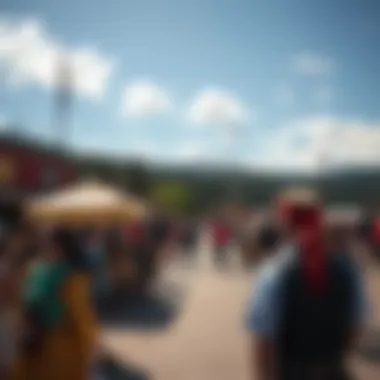
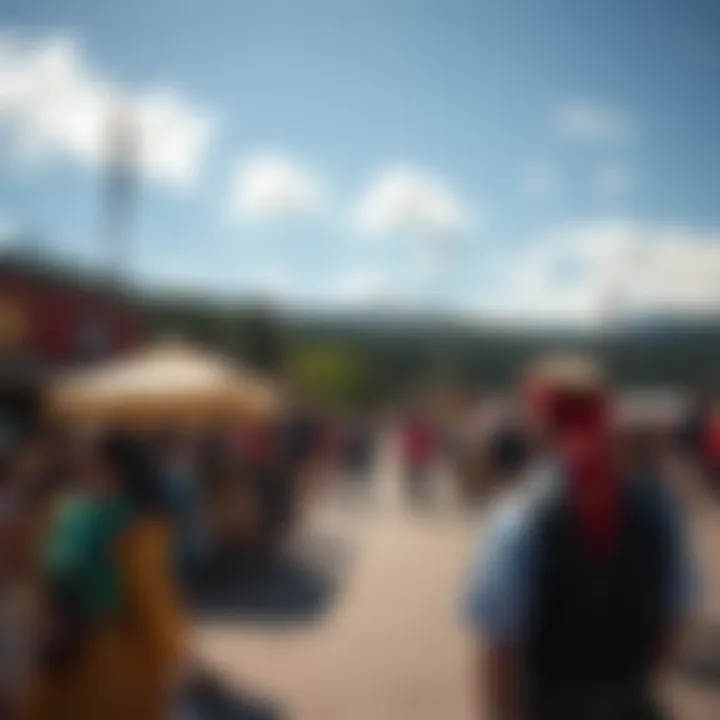
The benefits of engaging in these activities are manifold. Not only do they promote physical health, but they also serve as a serene escape from the fast pace of everyday life. Activities such as hiking can reduce stress levels and provide opportunities for mindfulness in nature. Moreover, biking allows for a faster exploration of larger areas, making it appealing for those looking to cover more ground.
One worth mentioning is the scenic pathway around Lake Coeur d'Alene, which scales along the water's edge and reveals picturesque views sure to captivate any visitor. Such trails are well-maintained and identified for differing skill levels, ensuring that both novice and experienced individuals feel at home.
Water Sports
With its sheer number of lakes and rivers, North Idaho boasts an exhilarating selection of water sports. From kayaking and paddleboarding to fishing and jet skiing, the vast waterways provide scope for all kinds of aquatic adventures. Lake Pend Oreille, the largest lake in Idaho, offers ample opportunities for sailboating and water skiing, attracting visitors who seek not just leisure but also adrenaline-pumping excitement.
Fishing is particularly prominent, with spots like the Clark Fork River drawing anglers aiming to catch the famed native cutthroat trout. Whether casting a line from the shore or enjoying a day of boating, the luminous waters invite a multitude of recreational activities. The environmental stewardship here, including efforts from local conservationists, ensures that these rich ecosystems will continue to thrive for generations to come.
Winter Sports
As the snow falls, North Idaho transforms into a winter wonderland, making it a hotspot for winter sports. Skiing and snowboarding at resorts such as Schweitzer Mountain Resort and Silver Mountain Resort turn into cherished past times for both locals and tourists alike. These resorts offer meticulously groomed runs and splendid scenery that allow skiers of all levels to enjoy the thrills of the mountain.
Additionally, snowshoeing and cross-country skiing present ideal alternatives to downhill athletic endeavors, inviting participants to traverse tranquil trails often devoid of large crowds. For those seeking adventure off the beaten path, snowmobiling in the backcountry offers a heart-pounding alternative with unrivaled views of the rugged winter landscape.
Engaging in such winter activities acts not only as a catalyst for physical fitness, but also a means to bond with family and friends over shared experiences.
The rich tapestry of recreational activities available in North Idaho is instrumental in promoting healthy lifestyles, fostering community, and enhancing the overall experience of visiting this remarkable region.
In summary, recreational activities in North Idaho are key to tapping into the region's full potential as a travel destination. The advent of each season ushers in new opportunities for enjoyment, attracting a diverse group of individuals eager to explore its natural beauty and cultural heritage.
Cultural Experiences
Cultural experiences form the vibrant tapestry of North Idaho's tourism landscape. They reflect the region's rich history, diverse communities, and evolving traditions, offering visitors a glimpse into the soul of this unique area. Engaging with local cultures enhances one’s understanding of not only the scenery surrounding them but also the people who call it home. This section delves into three key areas: local festivals and events, the art and music scene, and culinary offerings—each enriching the tourist experience and fostering connections with the community.
Local Festivals and Events
Throughout the year, North Idaho hosts an eclectic mix of festivals and events that celebrate its heritage and community spirit. For instance, the Coeur d'Alene Art Auction showcases local talent, featuring a large array of regional artwork while drawing collectors from near and far. Here, the atmosphere is electric—creators mingle with art lovers, all appreciating the creations that breathe life into Idaho's cultural narrative.
Another notable gathering is the Kootenai County Fair, which draws families for a week of excitement filled with rodeos, live music, and carnival rides. This traditional fair emphasizes the agricultural roots of North Idaho and serves as a platform for local vendors to showcase their goods, allowing visitors to taste the flavors of Idaho while enjoying homegrown entertainment.
Engaging in these festivals not only introduces visitors to local customs but also aids in preserving traditions and supporting local economies—a win-win for both tourists and residents.
Art and Music Scene
North Idaho’s art and music scene is as diverse as the landscapes it inhabits. The local community prides itself on fostering a thriving cultural environment that supports artists of various mediums. Sandpoint, for example, often celebrates its local creatives through art walks and exhibits that spotlight everything from paintings to sculptures. Additionally, small galleries frequently pop up along main streets, each with a unique story and perspective.
The live music scene is equally noteworthy. Local venues host regular performances, featuring bands and artists that mirror the region's eclectic character. From acoustic sets at casual cafes to larger gigs at dedicated concert spaces, there is an abundance of opportunities to connect with local musicians. This synergy not only contributes to a rich auditory experience for visitors but also supports artists striving to showcase their talent.
"Art and music are the voices of a community. Each note and brush stroke resonates, creating echoes of belonging that invite everyone in."
Culinary Offerings
Culinary experiences in North Idaho represent a delicious fusion of tradition and innovation. The emphasis on farm-to-table dining is apparent, with many restaurants sourcing ingredients directly from local farms. This not only ensures freshness but also supports the agricultural community in the region.
Many eateries specialize in traditional Idaho dishes, such as finger steaks and huckleberry desserts. The popularity of huckleberries, in particular, has surged; these tiny berries signal the arrival of summer and become the star ingredient in countless recipes. Hospitality establishments often host tasting events to introduce travelers to these native flavors, providing an opportunity to savor the rich agricultural bounty of the land.
Moreover, food festivals are frequent, drawing celebrated chefs from across the state to share their culinary expertise while introducing visitors to the region's flavors. Locavore festivals are great spots for food lovers to explore various local dishes, taste regional wines, and interact with producers passionate about sustainable farming practices.
In summary, the cultural experiences in North Idaho not only enhance the visitor experience but also strengthen community bonds. By participating in local events, enjoying the burgeoning art scene, and indulging in the unique culinary landscape, tourists help keep the heart of North Idaho beating strong.
Sustainable Tourism Practices
The significance of sustainable tourism practices lies in their ability to balance economic growth with ecological preservation. In North Idaho, where tourism is a major driver of the economy, adopting sustainable practices is crucial. These efforts not only protect the environment but also enhance the visitor experience. Sustainable tourism leads to long-term benefits for communities and habitats, creating a positive feedback loop where nature thrives and tourists return.
Conservation Efforts
Conservation efforts in North Idaho are pivotal in maintaining the delicate balance between tourism and the natural environment. Various organizations, such as the Idaho Department of Fish and Game and local conservation groups, are actively engaged in preserving the region's unique ecosystems. Techniques adopted often include:
- Wildlife Habitat Protection: Safeguarding the natural habitats of local wildlife, ensuring that species such as the bald eagle and the Idaho ground squirrel thrive.
- Reforestation Initiatives: Programs that focus on planting trees to restore denuded areas, maintaining the beauty and biodiversity of the landscape.
- Water Quality Monitoring: Keeping a close eye on the health of rivers and lakes, is vital for sustaining fishing and recreational activities in the area.
Collectively, these efforts not only bolster tourism by attracting nature enthusiasts but also safeguard vital resources for future generations. Without these conservation practices, the very attractions that draw visitors could be irrevocably harmed.
Community Engagement
Engaging local communities in sustainable tourism practices is equally vital. Community involvement ensures that tourism benefits are widely shared while fostering a sense of ownership over the natural resources. Some effective approaches include:
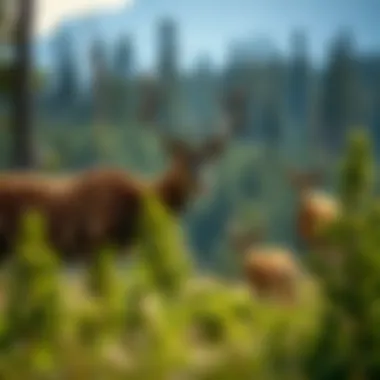
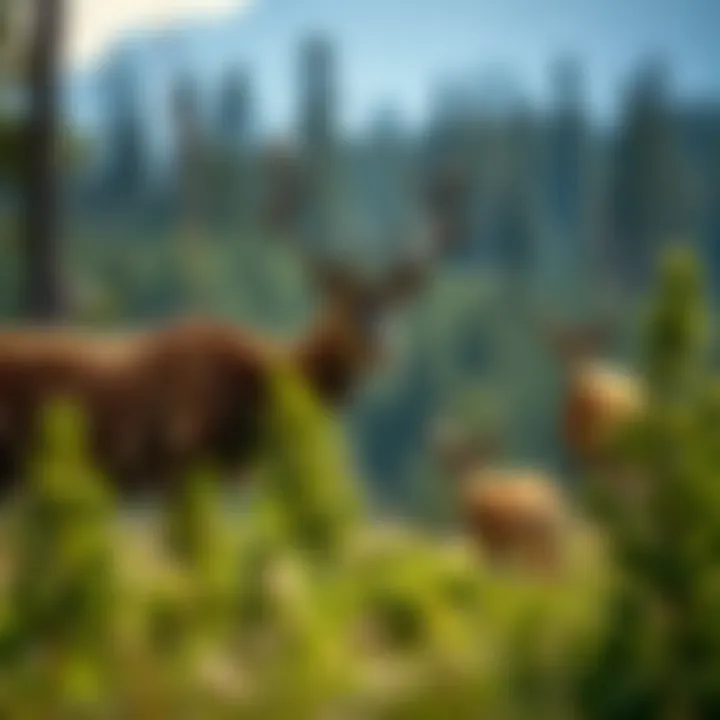
- Local Partnerships: Collaborations between local businesses, state agencies, and indigenous representatives help develop tourism that respects cultural heritage and the environment.
- Volunteering Programs: Initiatives inviting tourists to participate in conservation activities, like clean-up days or wildlife monitoring, not only raise awareness but create memorable experiences for visitors.
- Cultural Education: Providing authentic cultural experiences allows tourists to connect with the stories and traditions of the local communities, making the visit more meaningful.
Engaging with the community leads to a richer experience for tourists while ensuring that the social fabric remains intact. By involving local residents in the tourism sector, North Idaho can promote a sustainable model that respects both the environment and the people who call it home.
“In sustainable tourism, the goal is not just to see places, but to honor the stories of the land and its people.”
In summary, embracing sustainable tourism practices adds depth to the North Idaho tourism experience. It creates a cycle of care, respect, and appreciation that benefits both visitors and local communities alike.
Challenges Facing North Idaho Tourism
Exploring the tourist landscape of North Idaho comes with its share of hurdles that need to be addressed for sustaining its growth and appeal. Understanding these challenges is vital for stakeholders, including local communities, government bodies, and the tourism industry. By highlighting environmental concerns and economic factors, this section will unpack the complexity of sustaining tourism in this pristine region.
Environmental Concerns
When you think of North Idaho, you can't help but picture the stunning landscapes and abundant natural resources. However, with the influx of tourists, there are notable environmental impacts that can’t be overlooked. Increased foot traffic in national parks and recreational areas can lead to trail erosion, wildlife disturbances, and the potential for habitat loss.
For instance, a surge in visitation during peak seasons sometimes overshadows the delicate ecosystems present in places like the Coeur d'Alene National Forest, home to unique flora and fauna. This is where balance is needed. Advocating for responsible tourism practices, like designated trails and visitor education, becomes essential.
Moreover, issues like pollution from boats and construction can tarnish North Idaho’s beautiful lakes and rivers. Lake Pend Oreille, for example, is not just a recreational spot; it’s also home to various fish species. Ensuring water quality must be a priority, with stakeholders taking active measures to monitor and mitigate pollutants.
Overview of Key Environmental Challenges:
- Erosion of trails and natural habitats: Each step taken by a visitor can have significant impacts, illustrating the need for trail management.
- Wildlife Disruption: Increased human presence can scare animals, affecting their natural behavior and migration patterns.
- Pollution: Oil spills, littering, and noise pollution can be harmful to both wildlife and the tourism experience itself.
"When it comes to tourism, preserving our natural spaces is not just nicely said; it's the only way to enjoy their beauty for generations to come."
Economic Factors
Economic factors often go hand-in-hand with environmental issues but are distinct in their implications. North Idaho's tourism economy has always been a double-edged sword. It provides jobs, supports local businesses, and drives infrastructure development, yet it also poses risks of seasonal dependency and economic disparities.
Many small towns rely heavily on holidaymakers, but this can lead to fluctuations that complicate financial planning. For instance, businesses like restaurants and lodging facilities may thrive in the summer months but struggle during the off-season, leading to economic instability for employees and communities.
Furthermore, with changing travel trends, there's an increasing need for diversifying the tourism offerings beyond traditional outdoor activities. Incorporating cultural experiences, such as art festivals or rich culinary events, could provide a safety net against potential downturns during seasonal slumps.
Key Economic Concerns:
- Seasonal Dependency: Heavy reliance on certain months can cause significant economic fluctuations for local businesses.
- Infrastructure Strain: Increased tourist activity can outpace the resources available, requiring infrastructure improvements that aren't always funded.
- Workforce Issues: Finding skilled labor during peak seasons can be challenging, leading to increased operational costs.
In summary, addressing these challenges is crucial not just for sustaining tourism but also for enhancing the overall experience for visitors and locals alike. This awareness fosters a thorough understanding of tourism's complexities, allowing all involved to plan effectively for North Idaho's bright future.
Future Prospects for North Idaho Tourism
The future of tourism in North Idaho looks promising, shaped by factors like environmental sustainability, evolving travel preferences, and innovative service offerings. As the region continues to build on its distinct natural bounty and rich cultural fabric, various elements will emerge as notable contributors to its tourism appeal. Understanding these prospects is essential, not just for local businesses, but for conservation efforts and community initiatives aiming for balance in development.
Emerging Trends
The landscape of tourism is perpetually changing, and North Idaho is no exception. Travellers are becoming more discerning, often seeking authentic experiences that connect them to the local culture and environment. Here are some key trends that stand out:
- Eco-Tourism and Responsible Travel: With increased awareness of climate change, tourists are more inclined to choose destinations that prioritize sustainable practices. North Idaho's pristine forests and lakes provide a backdrop for eco-friendly travel initiatives, such as guided hiking tours emphasizing Leave No Trace principles.
- Agritourism Boom: The agritourism sector is gaining traction, allowing visitors to engage with local farming practices. Farm-to-Table experiences, especially during harvest seasons, create unique travel options that highlight the region’s agricultural heritage.
- Health and Wellness Retreats: As people turn their focus towards self-care, wellness retreats that offer yoga, meditation, and holistic treatments amidst North Idaho's natural landscapes are on the rise. The tranquility of areas like the Coeur d'Alene and Sandpoint enhances the appeal of such retreats.
These trends indicate a shift not only in what tourists prioritize but also in how local communities could adapt their offerings.
Investment Opportunities
Investing in North Idaho's tourism potential also presents lucrative avenues for stakeholders. Several key areas merit attention for those looking to capitalize on the region's growth:
- Infrastructure Development: Improving access to remote areas can create opportunities for new lodges, hotels, or campgrounds. Enhanced transportation options can also encourage more visitors to explore the lesser-known regions, broadening the tourism benefits.
- Local Artisans and Craft Markets: Supporting local artists and craftspeople can lead to the establishment of vibrant markets that attract tourists. Investments in facilities that showcase North Idaho's cultural heritage through art and craftsmanship could contribute significantly to diversifying local commerce.
- Technology Integration in Tourism: As digital platforms become vital in decision-making processes for travellers, investment in marketing and online booking services can enhance visibility. This integration could help North Idaho tap into a larger market, attracting a younger demographic interested in unique travel experiences.
The End
In wrapping up our exploration of North Idaho tourism, it’s crucial to underscore the significance of recognizing both the region's natural and cultural wealth. As we have discussed, North Idaho is not just a destination; it’s a confluence of history, adventure, and sustainable practices. The region offers a unique blend of awe-inspiring landscapes, local traditions, and activities that cater to various tastes.
The importance of tourism in North Idaho extends beyond economic benefits. It fosters a deeper understanding of the area's rich indigenous culture and the impact of settlers, creating an opportunity for visitors to engage with and respect local heritages. This connection is essential in a world where many seek authenticity in their travel experiences, and it encourages the preservation of these unique backgrounds.
Sustainable tourism practices are also key. As we face increasing environmental concerns, it’s important for both visitors and locals to champion efforts that protect North Idaho’s natural beauty. Adopting responsible travel habits, such as engaging in conservation projects or supporting eco-friendly businesses, can make a lasting impact on the region. This shared responsibility can promote a sense of community that regards ecotourism not just as a trend but as a necessary lifestyle.
Moving forward, we invite you to explore North Idaho, not merely as vacationers but as stewards of a land rich with stories and adventures waiting to be experienced.
"Travel doesn’t become adventure until you leave yourself behind." — Unknown
To learn more about North Idaho's attractions and practices, visit the following resources:
By exploring the scenic vistas and embracing the local culture, one can truly appreciate the essence of North Idaho.















